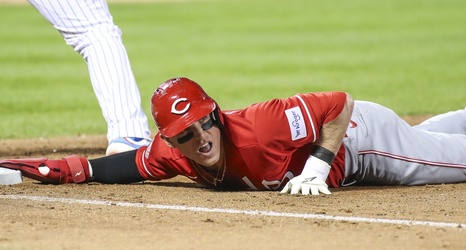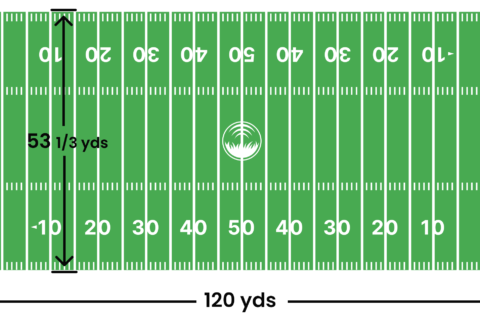LRP stands for Long Relief Pitcher, and MRP stands for Middle Relief Pitcher in baseball. Both terms refer to specific pitching roles in a team’s bullpen.
Long Relief Pitchers (LRPs) enter the game when the starting pitcher is removed early, often due to poor performance or injury. They are tasked with pitching several innings to bridge the gap to the later stages of the game. Middle Relief Pitchers (MRPs) typically pitch during the middle innings, usually the fifth to seventh, to maintain the lead or keep the game close.
Their role is crucial in maintaining team momentum and setting the stage for setup men and closers. Proper utilization of LRPs and MRPs can significantly impact a team’s success over a long season.

Credit: www.chatsports.com
Introduction To Lrp And Mrp In Baseball
Baseball has many unique terms and roles. Two important terms are LRP and MRP. These terms refer to types of relief pitchers. Relief pitchers play a vital role in games. They enter the game after the starting pitcher.
The Pitching Landscape
Pitching is crucial in baseball. Each team has a starting pitcher. This pitcher starts the game and usually pitches several innings. After the starting pitcher, relief pitchers come in.
There are different types of relief pitchers. Some pitch early in the game, some in the middle, and some at the end. LRP and MRP are two such types.
Key Terms In Relief Pitching
- LRP (Long Relief Pitcher): A pitcher who pitches many innings.
- MRP (Middle Relief Pitcher): A pitcher who pitches in the middle innings.
- Closer: A pitcher who finishes the game.
- Setup Man: A pitcher who pitches before the closer.
| Term | Role |
|---|---|
| LRP | Pitches many innings, often early in relief. |
| MRP | Pitches in the middle innings, bridging to later pitchers. |
| Closer | Finishes the game in the final innings. |
| Setup Man | Pitches before the closer, usually in the 8th inning. |
Understanding these roles helps fans enjoy the game more. Each pitcher has a specific job. They work together to help their team win.
The Role Of Relief Pitchers
Relief pitchers, or relievers, play crucial roles in baseball. They enter the game after the starting pitcher. Their main job is to maintain or change the game’s momentum. Understanding the roles of LRP (Long Relief Pitcher) and MRP (Middle Relief Pitcher) is vital for fans and players.
Bullpen Strategy
The bullpen is where relief pitchers stay during the game. Coaches use bullpen strategies to decide which pitcher to use. Long Relief Pitchers (LRP) come in if the starter struggles early. They pitch for several innings to save the bullpen.
Middle Relief Pitchers (MRP) are used in the middle innings. They bridge the gap between the starter and the closer. MRPs often pitch in high-pressure situations. Their job is to keep the score close.
| Role | Innings Pitched | Situations |
|---|---|---|
| Long Relief Pitcher (LRP) | 3-4 innings | Early game struggles |
| Middle Relief Pitcher (MRP) | 1-2 innings | Middle innings, high pressure |
Impact On The Game
Relief pitchers significantly impact the game’s outcome. An effective LRP can save the bullpen for future games. They can also keep the team in the game after a poor start. MRPs manage critical middle innings. They prevent the opposing team from building a lead.
- LRPs provide stability early on.
- MRPs handle high-stress situations in the middle innings.
Strong relief pitching can change a game’s momentum. It can also boost team morale. Teams with reliable relievers often have better records.
Defining The Long Relief Pitcher (lrp)
In baseball, pitching roles vary. One crucial role is the Long Relief Pitcher (LRP). The LRP steps in during tough times. They pitch multiple innings, often when the starting pitcher struggles. Their job is to stabilize the game and save the bullpen.
Characteristics Of An Lrp
LRPs must be versatile. They need endurance to pitch many innings. An LRP usually has a diverse pitch arsenal. This variety helps them face different batters. They must also stay mentally strong. Coming in unexpectedly requires quick adaptation.
Here are some key characteristics of an LRP:
- Endurance: Ability to pitch multiple innings.
- Diverse Pitch Arsenal: Variety of pitches to face different batters.
- Mental Toughness: Quick adaptation to unexpected situations.
- Consistency: Reliable performance over several innings.
Situations For Lrp Deployment
Managers deploy LRPs in specific scenarios. These situations often involve early game struggles. If the starting pitcher fails early, an LRP can stabilize the game. They also pitch in long extra-inning games. Their endurance is crucial here.
Here are common situations for LRP deployment:
- Early Game Struggles: Stabilizing when starters falter.
- Extra Innings: Providing length in extended games.
- Mismatched Opponents: Facing tough batting lineups early.
- Resting Bullpen: Saving other relievers for future games.
LRPs are vital in these scenarios. They keep the team competitive and manage pitching resources effectively.
The Middle Relief Pitcher (mrp) Explained
In baseball, the Middle Relief Pitcher (MRP) holds a crucial role. They bridge the gap between the starting pitcher and the closer. MRPs often enter the game in the middle innings. Their performance can significantly influence the game’s outcome. Understanding MRPs is key for any baseball fan.
Mrp Responsibilities
MRPs have several important responsibilities. They usually pitch from the fourth to the seventh inning. MRPs must maintain or regain control of the game. They often face high-pressure situations. MRPs need to pitch effectively to keep the team’s lead or minimize the opponent’s advantage.
| Responsibility | Explanation |
|---|---|
| Maintain Lead | Ensure the team remains ahead in the game. |
| Regain Control | Stabilize the game if the team is trailing. |
| High Pressure | Handle difficult situations with skill and composure. |
Transitioning The Game
MRPs play a vital role in transitioning the game. They act as a bridge from the starting pitcher to the closer. This transition is critical for maintaining momentum. MRPs need to pitch effectively to ensure a smooth handover to the setup man or closer.
- Bridge from starter to closer
- Maintain game momentum
- Ensure smooth transition to the setup man
Effective MRPs often make the difference between winning and losing. Their role might seem secondary, but it is vital. Understanding the importance of MRPs helps appreciate the depth of baseball strategy.
Training And Mindset
Understanding the roles of LRP (Long Relief Pitcher) and MRP (Middle Relief Pitcher) in baseball requires a deep dive into their training and mindset. These pitchers have unique responsibilities and must prepare both physically and mentally.
Physical And Mental Preparation
Both LRP and MRP need specific physical training. They must maintain strength and endurance. This helps them pitch multiple innings if needed.
Here’s a typical physical training regimen:
- Cardio exercises for stamina
- Strength training for muscle endurance
- Pitching drills for accuracy
- Flexibility exercises to prevent injuries
Mental preparation is equally important. These pitchers often enter games during high-pressure situations. They must stay calm and focused. Techniques for mental preparation include:
- Meditation and mindfulness exercises
- Visualization of game scenarios
- Breathing exercises to stay relaxed
Adapting To The Role
LRPs and MRPs must be adaptable. Their role can change quickly during a game. They might pitch at any time. Flexibility is key.
Here are some tips for adapting to these roles:
- Stay warmed up and ready in the bullpen
- Communicate with coaches for potential game situations
- Maintain a flexible mindset and be ready for anything
- Stay hydrated and fueled for energy
Adapting also involves understanding the team’s strategy. Both LRP and MRP must know the opponent’s strengths and weaknesses.
| Aspect | LRP | MRP |
|---|---|---|
| Primary Role | Pitch long innings | Bridge to closer |
| Preparation | Focus on endurance | Focus on high-intensity situations |
Both roles are crucial for the team’s success. Proper training and mindset can make all the difference.

Credit: www.reddit.com
Notable Lrp And Mrp Players
Baseball has many roles, but LRP (Long Relief Pitcher) and MRP (Middle Relief Pitcher) are crucial. These players often save games with their skills. Let’s explore some notable LRP and MRP players.
Historical Examples
Hoyt Wilhelm was one of the best MRPs. He played from the 1950s to the 1970s. Wilhelm was known for his knuckleball pitch. He made it to the Hall of Fame.
Rollie Fingers was another great MRP. He played in the 1970s and 1980s. Fingers was famous for his handlebar mustache and his closing abilities. He won the Cy Young Award.
| Player | Years Active | Specialty |
|---|---|---|
| Hoyt Wilhelm | 1952-1972 | Knuckleball Pitch |
| Rollie Fingers | 1968-1985 | Closing Abilities |
Modern Game Changers
In recent years, Andrew Miller stands out as a top MRP. Miller has a devastating slider. He has been a key player in many playoff games.
Josh Hader is another modern MRP star. Hader is known for his high strikeout rate. He has helped his team win many games with his fast pitches.
- Andrew Miller: Known for his slider.
- Josh Hader: Famous for high strikeout rate.
Statistics And Performance Analysis
Understanding the statistics and performance of baseball players is crucial. It helps in evaluating their effectiveness on the field. This section will focus on LRPs (Long Relief Pitchers) and MRPs (Middle Relief Pitchers).
Evaluating Effectiveness
Evaluating LRPs and MRPs involves specific metrics. These metrics help in determining their impact on the game. Let’s explore these metrics in detail.
Key Metrics For Lrps And Mrps
| Metric | Description |
|---|---|
| ERA (Earned Run Average) | This measures the average number of earned runs a pitcher allows per nine innings. |
| WHIP (Walks plus Hits per Inning Pitched) | This calculates the number of baserunners a pitcher allows per inning. |
| SO/9 (Strikeouts per Nine Innings) | This measures the number of strikeouts a pitcher records per nine innings. |
| FIP (Fielding Independent Pitching) | This evaluates a pitcher’s effectiveness at preventing home runs, walks, and hit-by-pitches while causing strikeouts. |
These metrics are vital for analyzing the performance of LRPs and MRPs. Each metric provides unique insights.
ERA shows how often a pitcher allows runs. A lower ERA indicates better performance.
WHIP helps assess a pitcher’s control and effectiveness. Lower WHIP values are better.
SO/9 is crucial for understanding a pitcher’s ability to strike out batters. Higher SO/9 values are favorable.
FIP focuses on outcomes a pitcher can control. Lower FIP values are better.
Understanding these metrics helps in making informed decisions about LRPs and MRPs. It aids in selecting the best pitchers for different game situations.
The Evolution Of Relief Pitching
Relief pitching has transformed baseball strategy over the years. Initially, teams relied heavily on starting pitchers. Today, the role of relief pitchers is critical. This shift has changed game tactics and player roles.
Changing Tactics Over The Years
In the early days, pitchers often pitched complete games. Relief pitchers were seldom used. Teams then realized the value of fresh arms late in games. This led to the rise of the Long Relief Pitcher (LRP) and Middle Relief Pitcher (MRP) roles.
LRPs are used when the starting pitcher exits early. They bridge the gap to later innings. MRPs usually pitch in the middle innings. They maintain the lead or keep the game close.
Future Of Relief Pitching
The future of relief pitching looks dynamic. Teams now focus on specialized roles. Advanced metrics and data analysis guide decisions. Pitchers train for specific game situations.
We may see even more specialized roles. Relief pitchers might only face a few batters. This could change the game further. The emphasis on fresh arms and matchups will continue to grow.
| Role | Inning Usage | Primary Function |
|---|---|---|
| LRP | Early to Mid | Bridge the Gap |
| MRP | Mid | Maintain Lead |
- LRP: Long Relief Pitcher
- MRP: Middle Relief Pitcher
- Relief pitchers are crucial for team success.
- Teams use data to decide pitching roles.
- Future roles may become even more specialized.
Relief pitching has revolutionized baseball strategy. It will keep evolving with new tactics and data insights.

Credit: bleacherreport.com
Conclusion
Understanding LRP and MRP is essential for any baseball enthusiast. LRP stands for Long Relief Pitcher, while MRP means Middle Relief Pitcher. These roles are crucial in managing a team’s pitching strategy. Knowing these terms helps fans appreciate the game’s complexity.
Stay informed and enjoy baseball even more!








